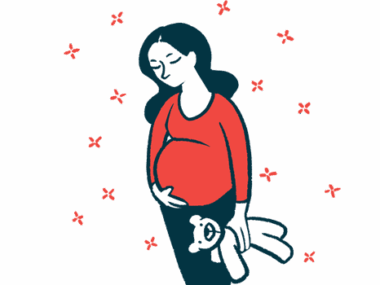‘I’m not ignoring you’ (bulbar symptom edition)
How I manage when I'm afflicted with trouble talking, chewing, and swallowing
Written by |

I’m not ignoring you. I’m just ignoring the chance to talk to you on the phone.
Cue phone ringing beside me. I look at caller ID and identify that it’s not an emergency.
*send to voicemail*
Then I wait and see if the caller actually leaves a voicemail or tries to contact me another way.
I might be screening calls because of the significant increase I’ve seen in the robo and spam variety. But more likely, I’ve spent my “talking spoons” of energy helping in-person customers or clients, so I need to give a break to all my muscles that support talking.
That’s one of the trade-offs I must take into account when running a business as a person with myasthenia gravis. The bulbar symptoms seem to bother me more now than the general fatigue and weakness did just two years ago. I’m not sure why that seems to be the case, but I have my ideas.
Struggles with talking, and more
Bulbar symptoms are those that affect the muscles connected to nerves that originate from the brain stem’s bulblike part, which helps facilitate eating, chewing, and talking. For me, they’re apparent by my soft or nasal voice when I’ve talked too much, my coughs during or after a meal, my trouble swallowing, my inability to eat foods that require lots of chewing, and my tendency to aspirate liquids when the symptoms are really bad.
Since opening The Nook, my coworking/shared workspace and technology center, I’ve found myself having to talk a lot more than I did before. Makes sense, right? When I open a business that serves the community, of course I’ll have to talk more. I planned on the in-person conversations that help my Nook patrons.
But I failed to plan for all the ancillary speaking engagements that’d be required.
These opportunities to educate my community about what I can do, as a business owner with a health challenge, aren’t necessarily bad, but they’ve definitely affected the balance of my activity levels and the effectiveness of my current treatment protocol.
If I go to my favorite local café for breakfast, for example, I get stopped and asked what services are available at The Nook or if I can help with one specific problem. I might spend 20 to 30 minutes explaining my answers to the folks there.
When I go to the local gift shop to deliver stickers for its drinks, I never just deliver and go back to work. The owner and I almost always talk shop about ideas or business woes.
Attending networking events hosted by the local chamber of commerce takes a guaranteed 60-plus minutes of chatting with other chamber members.
These are all great events, and I love each of them. But there are still trade-offs, and one of those trade-offs is that I avoid talking on the phone. I prefer email — not only to reduce my speaking, but also to give me a written reference for requested services.
Limb weakness might be a visible sign of the health challenges I face with myasthenia gravis, but that’s not so visible anymore as my treatment continues to improve. But the bulbar symptoms have forced me to set — and stick to — boundaries for public interactions.
In this sense, those symptoms have been a blessing as much as they’re a curse — and they’re still the latter because any small business owner can attest to the idea, let alone its implementation and adherence, that setting boundaries causes us to shudder in a commercial environment that practically insists we be accessible.
So if you call me, I’m not ignoring you. I’m just maintaining my healthy boundaries by acknowledging when I need to not talk. Send me an email, throw up some signs (I know basic American Sign Language), or send smoke signals, and I’ll get back with you as soon as I’m able.
Note: Myasthenia Gravis News is strictly a news and information website about the disease. It does not provide medical advice, diagnosis, or treatment. This content is not intended to be a substitute for professional medical advice, diagnosis, or treatment. Always seek the advice of your physician or other qualified health provider with any questions you may have regarding a medical condition. Never disregard professional medical advice or delay in seeking it because of something you have read on this website. The opinions expressed in this column are not those of Myasthenia Gravis News or its parent company, Bionews, and are intended to spark discussion about issues pertaining to myasthenia gravis.







KD Swan
Your post was helpful, I relate well to it, many years it’s taken me to realize using my voice, interacting is fatigue-provoking. My voice has long had that hoarse whisper and I can’t adjust it. It’s good to see it spelled out, it lets me know I’m not just imagining it, an inherited family reaction I think.
Best wishes to you, be well. Thanks for helping with every day MG reality.
Best,
KD
Carol Ebeling
Yes, this is me, far more bulbar issues than lower body. Except that mornings are crazy. My lower body is so weak that I need 2 hiking sticks and my husband to get me to the bathroom. 20 minutes after a warm sip of water and 150mg of Mestinon, and I’m like an inflatable lawn decoration that stands up and moves. LOL
Are there any NEW treatment options for those of us who are seronrgative?
Shawna Barnes
HI Carol. As far as new treatments, I know there are studies being published and trials happening all the time on using various treatments for seronegative folks like me (and I'm assuming you?). One of the studies is Vyvgart. Make sure you follow MG News as the scientists that write for MGN publish updates on upcoming and ongoing clinical trials all the time. - Shawna
Ricky Patton
Are there any positive treatments for seronegative
Shawna Barnes
Hi Ricky! While I can't say for certain about positive treatments, I can say that I am seronegative and have luck managing my symptoms with my current care plan. My care plan includes the use of prednisone, azathioprine, pyridostigmine bromide and biweekly IVIG infusions. We are all different and what works for me may not work for you or anyone else. But there are many who are seronegative that find a "goldilocks" treatment that is just right for them to manage their symptoms. - Shawna